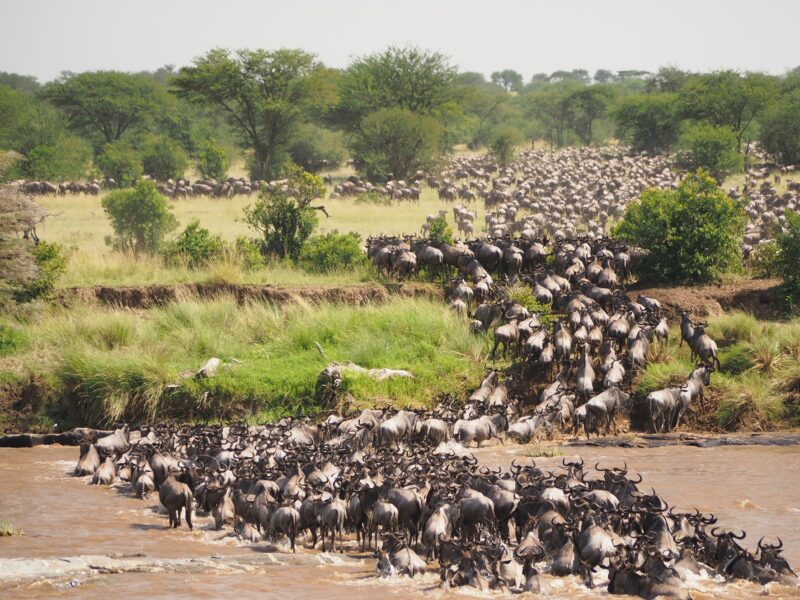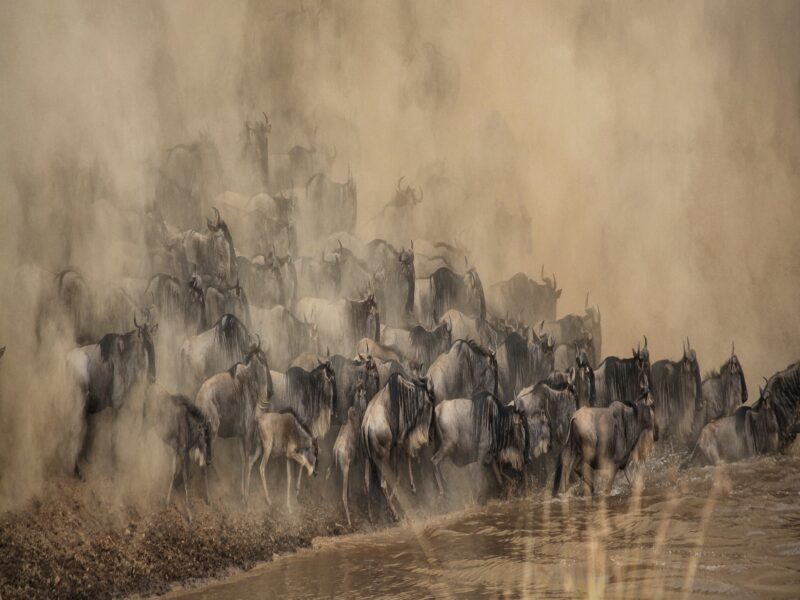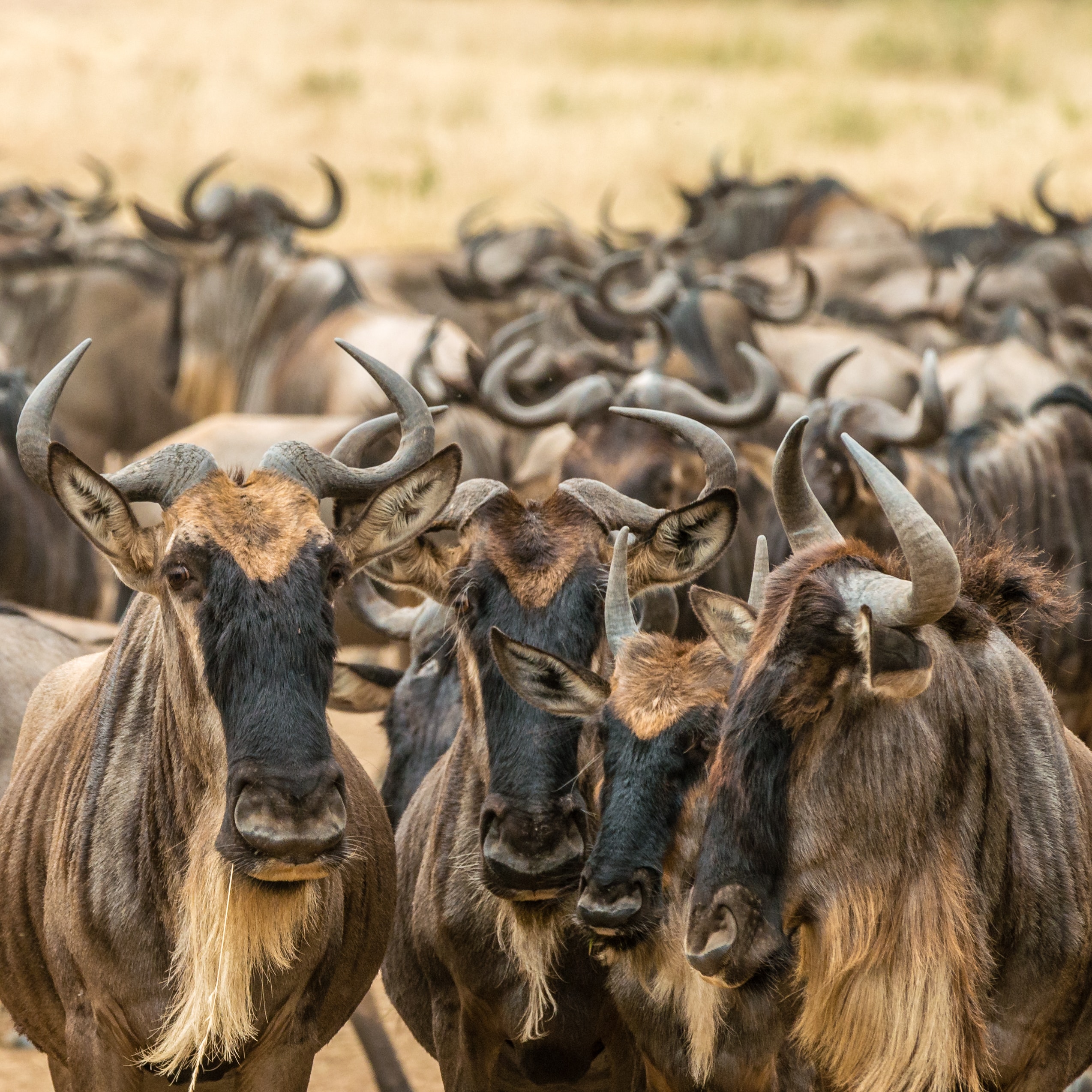The wildebeest migration is finally here in Kenya…a bit late this year but here nonetheless. Although there are still many animals amassed around the Mara River in the Serengeti National Park, the Maasai Mara Reserve has begun receiving the thundering herds.
So why is there such a hype about the migration? Should this event be a bucket list item?
The Great Migration of wildebeest from the Serengeti to the Mara is an annual event that occurs between July to September and is one of the wonders of the natural world. Beginning in the southern Serengeti after the calving of the wildebeest early on in the year, the migration moves in a circular motion to the Central Serengeti, following fresh grass and water. From here, they move to the northern Serengeti and into the Maasai Mara Reserve, arriving in their thousands, braving all sorts of perils in their quest for survival.
Accommodation in the Mara during the migration months is booked more than a year in advance, and rooms are difficult to find as visitors throng the Reserve.
Which begs the question……is this the right time to be in the Mara?
Let’s look at the both sides of the question…the pros and cons of staying in the Mara during the migration.
Pros
- It is the single largest herd movement of animals on the planet and it is probably a once-in-a-lifetime experience to witness this mass movement of animals.
- The river crossings are dramatic and electrifying with thousands of wildebeest crossing at the same time, plunging into crocodile invested rivers, with many losing their lives.

- Wildlife sightings are at their best during this time, as the predators follow the herds of wildebeest and zebra, and the vast numbers of prey make for easy pickings
- For avid photographers, this is a dream come true – imagine capturing images of over a million wildebeest moving in great numbers through these scenic national parks.
Cons
- During the months of July to Oct, when the migration is expected in Kenya, accommodation, transport and other costs are at their highest (this is peak season in Kenya), so you will pay premium rates for everything.
- As bookings for this season are made well in advance, oftentimes when looking for availability, you will have to settle for properties that you may not otherwise book – they may be costlier than budgeted for or they may not be of the standard you are used to.
- The Maasai Mara Reserve and the Serengeti National Park are filled to capacity with visitors during this time – lodges and camps are operating at 100% occupancy rates, and the river crossing sites are thronged with vehicles. If you are looking to spend quiet time in the Reserve observing the wildlife, this may not be the right time for this.
- You will be sharing the Reserve with different tiers of visitors, who may not have the right ethics of wildlife viewing ..they may be loud, harass the wildlife or even encourage their driver/guides to approach the wildlife very closely, sometimes hampering their activities.
- The sights and smells of the migration are very raw – bloated carcasses floating in the river, vultures flying overhead, the smell of the decaying carcasses carrying in the wind, and the snorting and stamping of wildebeest all around. If you are a squeamish person, you may not enjoy this.

So now, you decide…should you be here for the migration or not?
And if you decide that this is a must see item for you, then start making your bookings for the 2024 or even 2025 seasons.


Comment (0)